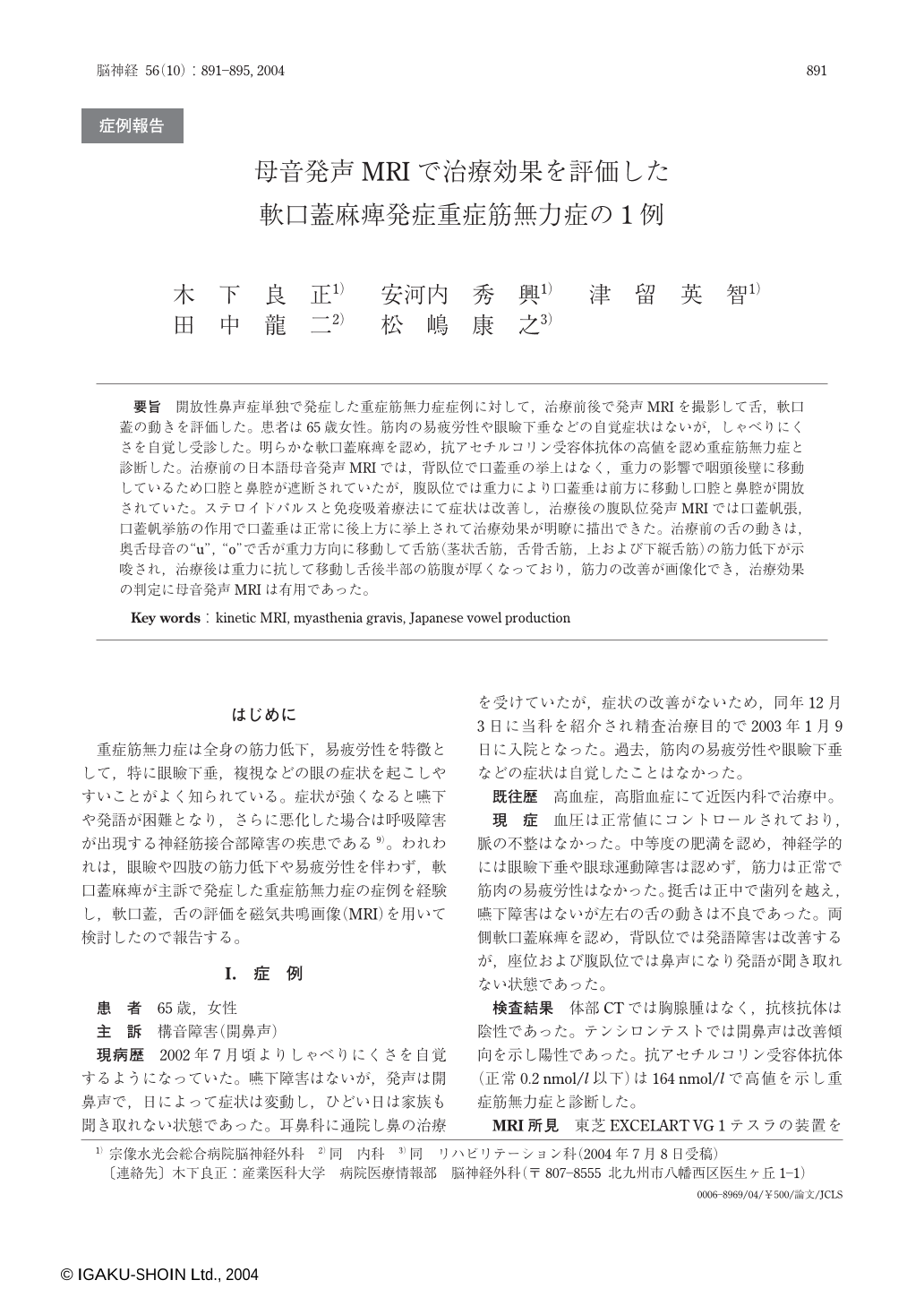Japanese
English
- 有料閲覧
- Abstract 文献概要
- 1ページ目 Look Inside
要旨 開放性鼻声症単独で発症した重症筋無力症症例に対して,治療前後で発声MRIを撮影して舌,軟口蓋の動きを評価した。患者は65歳女性。筋肉の易疲労性や眼瞼下垂などの自覚症状はないが,しゃべりにくさを自覚し受診した。明らかな軟口蓋麻痺を認め,抗アセチルコリン受容体抗体の高値を認め重症筋無力症と診断した。治療前の日本語母音発声MRIでは,背臥位で口蓋垂の挙上はなく,重力の影響で咽頭後壁に移動しているため口腔と鼻腔が遮断されていたが,腹臥位では重力により口蓋垂は前方に移動し口腔と鼻腔が開放されていた。ステロイドパルスと免疫吸着療法にて症状は改善し,治療後の腹臥位発声MRIでは口蓋帆張,口蓋帆挙筋の作用で口蓋垂は正常に後上方に挙上されて治療効果が明瞭に描出できた。治療前の舌の動きは,奥舌母音の“u”,“o”で舌が重力方向に移動して舌筋(茎状舌筋,舌骨舌筋,上および下縦舌筋)の筋力低下が示唆され,治療後は重力に抗して移動し舌後半部の筋腹が厚くなっており,筋力の改善が画像化でき,治療効果の判定に母音発声MRIは有用であった。
We report a 65-year-old Japanese female whose primary symptom of myasthenia gravis was related to rhinolalia aperta. The vocal tract during vowel production was evaluated using two-dimensional fast advanced spin echo(2D-FASE)MR images on supine and prone position. Before treatment, MRI on prone position demonstrated anterior shift of the palatine uvula and the tongue during Japanese “a”, “u” and “o” production following the gravity, the former suggested the paresis of the sphenosalpingostaphylinus and elevator veli palatini muscle and the latter the paresis of the styloglossal and hypoglossal muscles. After treatment of steroid pulse and immune absorption, 2D-FASE images on prone position revealed the normalized configuration of the tongue and the soft palate during the Japanese five-vowel production. Kinetic MRI may be useful for evaluation of dynamics of the tongue and the soft palate.
(Received : July 8, 2004)

Copyright © 2004, Igaku-Shoin Ltd. All rights reserved.


